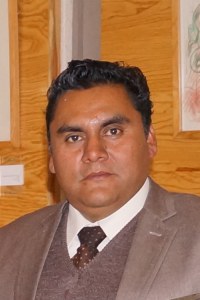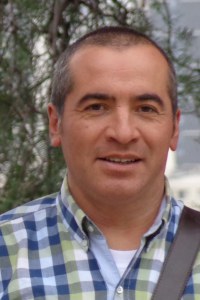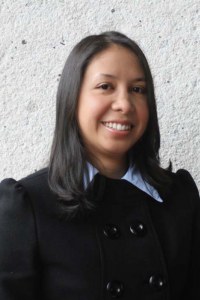

Tamminen, Anna
VTT Industrial Systems / P.O. Box 1306 / FI-33101 Tampere, Finland 358 3 316 3633 / anna.tamminen@vtt.fi
Knuuttila, Jari
VTT Industrial Systems / P.O. Box 1306 / FI-33101 Tampere, Finland 358 3 316 3321 / jari.knuuttila@vtt.fi
ABSTRACT
The risk management of a hospital usually separates the personnel safety from the patient safety. The patient is often weak in health and thereby very vulnerable to risks. The personnel of the care unit are also exposed to the same risks. This paper describes the results of a study in which a risk management model for the hospital unit as a whole was created. It was found that the risks of a patient often depend on the skills of the personnel, and the external risks or risks caused by medical devices often concern both the personnel and patients.
Keywords
Safety, Hospital, Personnel, Patient, Intensive care
INTRODUCTION
While in hospital care, a patient is vulnerable to many risks. Especially patients in intensive care are weak in health and may need many life supporting devices. The risks concerning the health of the personnel are generally thought to be different to the risks of a patient. It is clear that the vulnerable patients are more liable to get an infection or a disease than the staff working in the same unit. However, the hazards to the personnel are the same. The risks just are not always as high as to those of the patients.
The environment of intensive care is machined. It is obligatory to use many life supporting devices like a respirator. Patients stay in the unit for only a few days. The continuous turnover of patients and the use of modern equipment systems requires that the personnel should be well educated and equal to their duties.
The wellness of hospital personnel has been studied /1/. It is known that the main reasons for the illnesses of the healthcare personnel are stress and ergonomic problems. The hospital staff is also ageing, and all these factors have an effect on patient safety.
Risk analyses have been conducted also in hospitals. Patient safety strategies concentrate on the patient safety /2/. The risk managers' duty is to prevent patient injuries while safety officers try to minimize the occupational risks. There are many possible ways to analyze risks and to maintain safety, but no common model concerning both the personnel and the patient is currently found.
The purpose of the study described here was to improve safety in healthcare units and to create a risk management model to be used in different kinds of hospital units. The risks studied included issues of both personnel and patient safety. The two-year development project concentrated on the risks of intensive care units.
METHOD
The study had two cases. Two intensive care units from different Finnish university hospitals participated in the study. In both units a group of personnel was selected to carry out the risk assessment. The risk assessment groups consisted of four to ten persons including nurses, doctors and other members of the staff. The group met once every month during the study.
The first task was to model the main process of the case unit. Modelling gives a general view of the care unit /3/. The modelling was done on the grounds of quality systems and other operational documents of the hospitals. The main process was divided into special processes. Parts of the modelled processes were then chosen for further investigation and risk analyses.
The units themselves decided on which processes the project would concentrate. The main process studied concerned respiratory care in one unit and the whole stabilisation process of a patient in the other unit. Both cases studied also the risks concerning the arrival of a new patient, personnel safety, and the use of medical devices and medicine. The hazards in these areas were identified and the magnitudes of the risks were assessed depending on the likelihood and severity of the harms. The personnel of the intensive care units carried out all the risk analyses using different kinds of analysis methods.
All of the personnel in the units participated in the study by answering several queries and by taking part in the information meetings. The queries collected data concerning the hazards and wellness of the staff.
The development project was funded by National Agency for Medicines, The Finnish Work Environment Fund, and VTT.
RESULTS
The risks of the patients and personnel
It was found that the main hazards threatening patients are related to the situation that the vital functions depend on different devices. The acts of the personnel are also a remarkable factor. The personnel have to be well educated and equal to their duties. One of the main problems is inadequate user training of equipment. This might have an influence on the safe use of medical devices.
In personnel safety, work-related stress, ergonomic problems and the risk of infection are most likely. Sharps injury turned out to be one of the major accident hazards. Due to the magnitude of sharps injuries, the risk of infection also increases. In intensive care units the equipment and medical devices also have an effect on the personnel safety. For example, long-lasting noise caused by various alarm sounds may be intolerable. Also, the improper use of radiation protection devices can lead to a danger
to the personnel exposed to X-rays.
The potential hazards of the intensive care unit were assessed with an enquiry carried out in the study. All of the personnel were asked to answer the questions. The results of this enquiry showed that most powerful influence on safety according to the personnel are the use of medical devices, the physical environment, and the relative strain (Figure 1).
Working environment
 |
|
Work-related strain Working with devices |
Other working situation
Other
ICU 1 (n=238)
ICU 2 (n=193)
Ergonomics
ICU = Intensive Care Unitn = total number of observations
Patient
0 5 10 15 20 25 30 35 40
Percentage of observations
Figure 1. The results of an enquiry concerning critical issues on the safety of the intensive care units.
In one of the case units, the most critical issue was experienced to be the physical environment, and in the other case, the use of medical devices (including risks to patients). Both units estimated relative stress to be the second critical issue (Figure 1).
The problems among the personnel have a strong influence on patient safety. If the health care unit is understaffed it is hard to maintain safety standards. Constantly changing substitutes increase the possibility of accidents. In emergency situations the personnel have to be able to act professionally.
Risk management model
The model of risk management includes process modelling and risk assessment. The risk analyses of personnel and patient safety can be carried out simultaneously using the same methods. The prerequisite for this is that the process modelling has been done in detail. It is possible to assess risks of an occasion and to evaluate the magnitude of the risk separately depending on the object.
The model of risk management consists of (Figure 2):
- Planning the development project and collecting data,
- Modelling the processes of the unit,
- Defining the object of the risk assessment,
- Assessing and evaluating the personnel and the patient risks ,
- Risk management actions taking steps to improve both patient and personnel safety,
- Monitoring the risk management actions.
Planning Data collecting
Process modelling
Defining the object
Risk assessment and evaluation
- enquiries
Monitoring
Planning the risk control measures
Implementing the risk control actions
Safe care unit
Figure 2. The risk management model of a safe care unit.
 |
|
After finishing the risk assessment process, the process starts over concentrating on different parts of the process modelled. When this cycle is finished, the care unit remains safe and is able to improve its actions. In the project a method to register the results of the risk assessment was created. All the results of the modelling and the risk assessments were to be collected in one table (Table 1). Table 1. Collecting results of a risk assessment. |
|
Process |
Task |
Hazard |
Information |
Patient / Personnel |
Level of risk |
Actions needed |
Responsibility |
OK |
|
|
Probability |
Consequences |
||||||||
The hazards identified were collected in a table as shown (Table 1). It was important to identify the object of the risk, patient or personnel, and to assess the risk by taking all the available information of the hazard situation into consideration. The level of risk was assessed on the basis of the object: personnel or patient. The probabilities and consequences were assessed created for the patients and the personnel separately.
As an example, there are three cases shown in Table 2. During the process of a new patient arriving there are several mutual hazards concerning both patient and personnel. Lifting the patient is a situation which occurs constantly. The lifting can be extremely harmful to both parties, but when several nurses are taking part to the action, the consequences are less harmful (Table 2).
Table 2. Example of a risk assessment table.
|
Process |
Task |
Hazard |
Information |
Patient / Personnel |
Level of risk |
Actions needed |
Responsib. |
OK |
|
|
Probab. |
Conseq. |
||||||||
|
Arrival of a patient |
Lifting |
Back- ache |
Many nurses lifting one patient |
Personnel |
Likely (C) |
Harmful (II) |
Physio- therapist training |
Health service J.S. 5/2004 |
|
|
Substantial risk (4) |
|||||||||
|
Waste handling |
Collecting needles |
Sharps injury |
Needles are collected separately |
Personnel |
Unlikely (B) |
Critical (III) |
Purchasing needles with guards |
Head nurse S.H. 3/2004 |
|
|
Substantial risk (4) |
|||||||||
|
Purchasing new equipment |
Writing and using shorten- ed inst- ructions |
Safety instructi ons may be misunde rstood |
Safe use of the equipment requires that the manu- facturer's instructions are followed. |
Patient |
Unlikely (B) |
Critical (III) |
Writing operation document to control special cases which need shortened instructions. |
Clinical engineer M.T. 8/2004 |
|
|
Substantial risk (4) |
|||||||||
The risk assessment group planned several actions that would reduce the hazards identified. For example new operation documents were written and information meetings were planned to be held. It was important to decide on the responsible person for every action. The case units were supposed to tick the column OK when an action was concluded successfully.
DISCUSSION
To guarantee that a care unit is safe for both patients and personnel the risks of the unit should be handled as a whole. As a result of the development project a model for managing risks of a hospital unit was created. It was shown that there is no need to separate the risk analysis of patient and personnel safety as they are closely related to each other. However, the different point of view of patient and personnel safety has to be borne in mind while estimating the risks. Especially in intensive care the risks are higher to the patients depending on the use of equipment.
To be safe, a healthcare unit must have its organization in order. Taking care of the patient is the top priority. The quality of care depends on the employees working in the unit. This requires that the shifts and occupational safety are well organized. The target should be that the personnel have as low work-related strain as possible. Also the safe use of medical devices requires that the personnel are well educated and user training is organized taking the shifts into consideration (Figure 3).
Intensive care of the patient
 Planning and measuring actions
Planning and measuring actions
Organization
Risk Assessment Modelling
Using and
of the unit
Tarpeen kartoitus
development project
maintaining
medical devices
Occupational health and safety
Figure 3. The risk management of a safe healthcare unit should contain not only the care of the patient but also the organization, occupational safety, and the use of medical devices.
Without further studies it can not be stated that this method is adaptable to be widely used in health care risk management. It is uncomplicated to use and the results are simple to understand. The responsibility identification should guarantee that the risk reducing actions are completed.
In the participating intensive care units several actions were started in order to reduce the assessed risks. The project did not include all the processes of the units and so the risk management work continues. Information of the developed risk management model is given to other units of the case hospitals and also to other hospitals and health care units in Finland. The challenge is to spread the information widely and inspirit busy health care personnel to take part in this kind of thorough work. In the future the model mightl be used by the health care units even without any expert help.
REFERENCES
/1/ Kivimäki, R. Karttunen, A., Yrjänheikki L. (2003). Hoitotyöntekijä työssään ja ympäristössään. Ministry of Social Affairs and Health, 85 p.
/2/ Gutman, E. (2001). The Risk Manager's Role in Creating an Organizational Patient safety Strategy. Journal of Healthcare Risk Management, Volume 21, Number 3. pp. 13-18.
/3/ Leppänen, A. (2000). Työprosessin mallintaminen. Finnish Institute of Occupational Health , 56 p.
Papers relacionados













